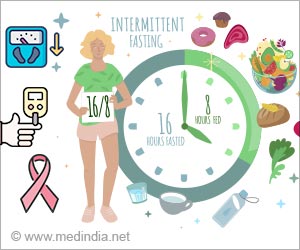Taste-focused labeling encourages people to eat healthy. For example, 'twisted citrus glazed carrots' work as it highlights the flavor, while 'absolutely awesome zucchini' fails as it is too vague.

‘Taste-focused labeling encourages people to eat healthy. For example, 'twisted citrus glazed carrots' works as it highlights the flavor, while 'absolutely awesome zucchini' fails as it is too vague.’





Evocative labels such as "twisted citrus glazed carrots" and "ultimate chargrilled asparagus" can get people to choose and consume more vegetables than they otherwise would--as long as the food is prepared flavorfully, researchers at Stanford University have found. Their findings appear in Psychological Science, a journal of the Association for Psychological Science."This is radically different from our current cultural approach to healthy eating which, by focusing on health to the neglect of taste, inadvertently instills the mindset that healthy eating is tasteless and depriving," said Alia Crum, an assistant professor of psychology and the senior author on the new paper. "And yet in retrospect it’s like, of course, why haven’t we been focusing on making healthy foods more delicious and indulgent all along?"
About three years ago, Crum, Brad Turnwald and graduate student Danielle Boles partnered with Stanford Residential & Dining Enterprises to try out a new approach to encourage healthy eating.
Culling adjectives from language that popular restaurants used to describe less healthy foods, they came up with a system for naming vegetables that focused on the flavors in vegetable dishes along with words that created the expectation of a positive eating experience--hence "twisted citrus glazed carrots." That study, published in 2017, showed that decadent-sounding labels could get people to eat vegetables more often than they would if the vegetables had neutral or health-focused names.
Crum, Turnwald and colleagues have now extended those findings by repeating the experiment at additional university dining halls around the United States. In collaboration with the Menus of Change University Research Collaborative--a nationwide network of 57 colleges and universities pioneering research to improve healthy and sustainable eating--the team tracked nearly 140,000 decisions about 71 vegetable dishes that had been labeled with taste-focused, health-focused or neutral names.
Advertisement
The team found that giving vegetables taste-focused names only worked when those dishes were indeed delicious. At one school where diners thought the vegetable dishes in general weren’t as tasty, labeling them using tasty descriptors had little impact.
Advertisement
The study is part of a broader project to make healthy foods more crave-worthy and less like something we tolerate because they’re good for us. That effort also includes Stanford SPARQ’s "Edgy Veggies" toolkit, a step-by step guide for how to implement taste-focused labeling that draws on Crum and Turnwald’s studies.
In the long run, Crum, Turnwald and colleagues believe, the combination of research and tools that enable real-world change could have a broad impact on eating habits.
"College students have among the lowest vegetable intake rates of all age groups," Turnwald said. "Students are learning to make food decisions for the first time in the midst of new stresses, environments and food options. It’s a critical window for establishing positive relationships with healthy eating."
Source-Eurekalert















